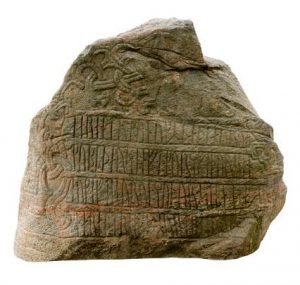May 8 is International Viking Day, which provides all the excuse necessary to talk about how a Danish viking inspired the name for Bluetooth, opens a new window.
In 1997 there were several different companies working on short-range wireless communication strategies. They decided that it would be beneficial to create a university standard. Two of the engineers, Ericsson's Scen Mathesson and Inte's Jim Kardach, began talking about history and ended up talking about King Harald "Bluetooth" Gormsson. (Kardach would go home and read A History of the Vikings.)
Harald Bluetooth, opens a new window was the king of Denmark (c. 940-985) and was known for uniting Denmark and Norway and brought Christianity to the region. His accomplis
hments are noted on a large rune stone in Jelling, opens a new window that he had erected in his parents' memory. The origin of his Bluetooth nickname—blátǫnn in Old Norse or Blåtand in Danish—isn't known, but scholars believe that he may have had a tooth that looked blue.
Therefore, they chose Bluetooth as a temporary codename because of his success in uniting the Danish people. The name stuck and the Bluetooth symbol is a combination of Bluetooth's initials in Scandinavian runes: ᚼ and ᛒ.
I first read about Harald Bluetooth in Smithsonian Magazine, opens a new window, which you can find on the library's magazine app RB Digital. He's also recently been in the news as a thirteen-year-old boy recently discovered a treasure trove of Norse artifacts in Germany, opens a new window, including some silver coins, which were believed to belong to Harald Bluetooth.
For more information on Vikings, check out one of the many books available from the St. Tammany Parish Library, opens a new window.






Add a comment to: Bluetooth: The Viking King